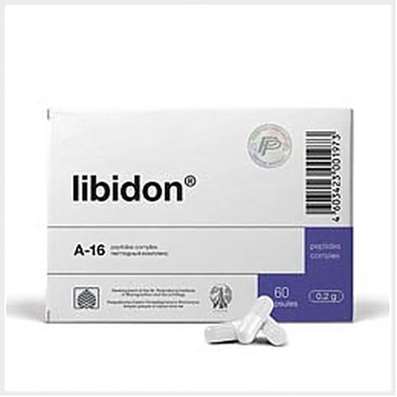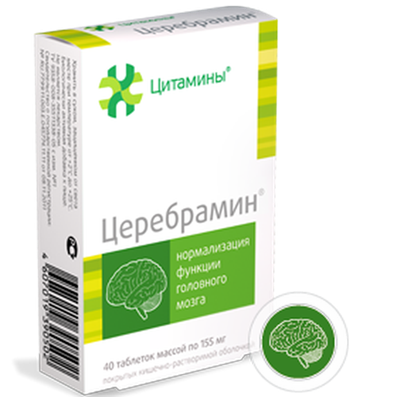Instruction for use: Furosemide
I want this, give me price
Furosemide (Furosemidum, Furosemidi) "loop" diuretics; It is coming quickly, strong and short diuresis. Blocks the reabsorption of sodium and chloride ions in the proximal and distal portions of the renal tubule and thick ascending part Gentle segment loops. Furosemide has a strong diuretic, natriuretic and hlorureticheskoe action.
Pharmacology:
Mode of action - a diuretic, natriuretic.
Valid throughout the ascending limb of Henle's loop of thick segment and blocks the reabsorption of 15-20% of the filtered ions Na +. Secreted into the lumen of the renal proximal tubules. Increases the excretion of bicarbonate, phosphate ions, Ca2 +, Mg2 +, K +, increases the pH of urine. It has secondary effects caused by release of mediators and intrarenal redistribution intrarenal blood flow. Quickly and adequately absorbed by any route of administration. Oral bioavailability is typically 60-70%. Binding to plasma proteins - 91-97%. . T1 / 2 0.5-1 hours in the liver biotransformation education inactive metabolites (mainly - glucuronide). Excreted by the kidneys by 88% and 12% - in the bile.
The diuretic effect is characterized by considerable severity, short duration and dose-dependent. After oral administration it occurs within 15-30 minutes, reaching a maximum after 1-2 hours and lasts 6-8 hours on / in the injection is manifested in 5 minutes, peak -. 30 minutes duration - 2 h excretion period. Na + ions increases significantly, however, after its termination rate of excretion of Na + ions is decreased below the initial level (the phenomenon of "rebound" or return). The phenomenon is caused by a sharp activation of the renin-angiotensin and other antinatriuretic neurohormonal regulation units in response to a massive diuresis. Argininvazopressinovuyu and stimulates the sympathetic system, reduces the levels of atrial natriuretic factor in plasma causes vasoconstriction. Due to the "rebound" phenomenon when taking 1 per day can have a significant impact on the daily excretion of ions Na +. Effective in Heart Failure (both acute and chronic), improves the functional class of heart failure, as reducing the pressure of the left ventricle filling. Reduces peripheral edema, congestion in the lungs, pulmonary vascular resistance, pulmonary capillary wedge pressure in the pulmonary artery and the right atrium. Maintains efficiency with low glomerular filtration rate, so is used to treat hypertension in patients with renal insufficiency.
Application of the substance Furosemide:
Inside: edematous syndrome of various genesis, including in chronic heart failure, chronic renal failure, liver disease (including cirrhosis), edema in the nephrotic syndrome syndrome (nephrotic syndrome in the foreground is the treatment of the underlying disease), acute renal failure (including that of pregnancy and burns, to maintain the excretion of fluids ), arterial hypertension.
Parenteral: edema syndrome in patients with chronic heart failure II-III Article, congestive heart failure, nephrotic syndrome, cirrhosis of the liver. pulmonary edema, cardiac asthma, cerebral edema, eclampsia, hypertension severe course, some forms of hypertensive crisis, hypercalcemia; carrying out forced diuresis, including in cases of poisoning by chemicals that are excreted renally in unchanged form.
Contraindications:
Hypersensitivity (including derivatives of sulfonylureas, sulfonamides), renal failure with anuria, severe liver failure, liver coma and precoma, severe electrolyte imbalance (including hypokalaemia and hyponatraemia expressed), hypovolemia (with hypotension or without it), or dehydration, pronounced violation of the outflow of urine from any cause (including unilateral urinary tract disease), digitalis intoxication, acute glomerulonephritis, decompensated mitral or aortic stenosis, increased pressure in the jugular vein over 10 mm Hg. Art., hypertrophic obstructive cardiomyopathy, hyperuricemia, children under 3 years (for tablets).
Restrictions apply:
Hypotension; a condition in which an excessive reduction of blood pressure is particularly dangerous (stenotic lesion of the coronary and / or cerebral arteries), acute myocardial infarction (increased risk of cardiogenic shock), diabetes, or a violation of carbohydrate tolerance, gout, hepatorenal syndrome, hypoproteinemia (eg in nephrotic syndrome - the risk of ototoxicity furosemide), violation of the outflow of urine (prostatic hypertrophy, narrowing of the urethra or hydronephrosis), systemic lupus erythematosus, pancreatitis, diarrhea, ventricular arrhythmia history.
Pregnancy and breast-feeding:
When pregnancy is possible only for a short time, and only when the anticipated benefit to the mother outweighs the potential risk to the fetus (passes through the placental barrier). In the case of furosemide in pregnancy must be careful monitoring of the fetus.
Side effects of substance Furosemide:
Cardio-vascular system and blood (blood, hemostasis): decrease in blood pressure, including orthostatic hypotension, collapse, tachycardia, arrhythmia, decreased CBV, leukopenia, thrombocytopenia, agranulocytosis, aplastic anemia.
From the water-electrolyte metabolism: hypovolemia, hypokalemia, hypomagnesemia, hyponatremia, hyposalemia, hypocalcemia, hypercalciuria, metabolic alkalosis, impaired glucose tolerance, hyperglycemia, hypercholesterolemia, hyperuricemia, gout, increased LDL cholesterol (in high doses), dehydration (risk the development of thrombosis and thromboembolism, often in elderly patients).
From the digestive tract: loss of appetite, dryness of the oral mucosa, thirst, nausea, vomiting, constipation / diarrhea, cholestatic jaundice, pancreatitis (aggravation).
From the nervous system and sensory organs: dizziness, headache, paresthesia, lethargy, weakness, weakness, lethargy, drowsiness, confusion, muscle weakness, leg cramps (tetany), inner ear damage, hearing loss, blurred vision.
With the genitourinary system: oliguria, acute urinary retention (in patients with prostatic hypertrophy), interstitial nephritis, hematuria, reduced potency.
Allergic reactions: purpura, photosensitivity, urticaria, pruritus, exfoliative dermatitis, erythema multiforme, vasculitis, necrotizing vasculitis, anaphylactic shock.
Other: chills, fever; with a / in the introduction (optional) - thrombosis, calcification of the kidneys in premature infants.
Interaction:
Aminoglycosides, ethacrynic acid and cisplatin ototoxicity increase (especially in impaired renal function). Increases in the background of amphotericin B. At the risk of kidney damage high doses of salicylates increases the risk of salitsilizma (competitive renal excretion), cardiac glycosides - hypokalemia and associated arrhythmias, corticosteroids - electrolyte imbalance. Reduces muscle relaxant tubocurarine activity, potentiates the effect of succinylcholine. Decreases renal clearance (and increases the likelihood of intoxication) lithium. Under the influence of furosemide increases the effect of ACE inhibitors and antihypertensive agents, warfarin, diazoxide, theophylline, attenuated - antidiabetic drugs, noradrenaline. Sucralfate and indomethacin (by inhibition of PG synthesis, disorders of plasma renin levels and aldosterone excretion) reduce efficacy. Probenecid increases the concentration of serum (blocking excretion).
Overdose:
Symptoms: hypovolemia, dehydration, hemoconcentration, severe hypotension, decreased CBV, collapse, shock, heart rhythm disturbances and conduction (including AV block, ventricular fibrillation), acute kidney failure with anuria, thrombosis, thromboembolism, drowsiness, confusion , flaccid paralysis, apathy.
Treatment: Correction fluid and electrolyte balance and acid-base balance, volume replacement, symptomatic therapy, maintaining vital functions. A specific antidote is not known.
Dosing and Administration:
Inside, in / m or / in. The batch is individually, depending on indications, clinical situation, patient age. During treatment dosing regimen is adjusted depending on the size and dynamics of the diuretic response of the patient.
Inside (in the morning before eating) for adults: an initial dose of 20-40 mg; if necessary, may increase the dose of 20-40 mg every 6-8 hours (large doses divided into 2-3 doses); if necessary, a single dose may be increased to 600 mg. Children: initial single dose - 1-2 mg / kg, maximum - 6 mg / kg. V / m or / - mono-, 20-40 mg (if necessary - to increase the dose of 20 mg every two hours). Jet / in a produce slowly over 1-2 minutes. At higher doses (80-240 mg or more) is administered / drip at a rate not higher than 4 mg / min. For children, the initial daily dose for parenteral administration - 1 mg / kg.
For breeding, use isotonic solutions of sodium chloride or glucose with a pH of at least 5.5.
Precautions substance Furosemide:
In the presence of ascites without peripheral edema is recommended in doses that provide additional urine output of no more than 700-900 ml / day to avoid the development of oliguria, azotemia and electrolyte metabolism disorders. In order to avoid "rebound" phenomenon in the treatment of hypertension appoint at least 2 times a day. It should be borne in mind that long-term use can cause weakness, fatigue, lower blood pressure and cardiac output, and excessive diuresis myocardial infarction with the stagnation in the pulmonary circulation may contribute to the development of cardiogenic shock. You need to temporarily cancel (a few days) before the appointment of ACE inhibitors. In order to avoid the development of hypokalaemia Furosemide is useful to combine with potassium-sparing diuretics, and potassium at the same time prescribe. In the treatment of furosemide it is always advisable to stick to a diet rich in potassium.
Against the background of a course of treatment is recommended to monitor blood pressure, level of electrolytes (especially potassium), of CO2, creatinine, urea nitrogen, uric acid, periodic determination of liver enzymes, calcium and magnesium content in the blood and urine glucose (diabetes). Patients with hypersensitivity to sulfonamides and sulfonylureas may have cross-sensitivity to furosemide. While maintaining oliguria for 24 hours furosemide should be canceled.
Should not be used during the drivers of vehicles and people skills relate to the high concentration of attention.
If abnormal liver function:
Edematous syndrome in liver disease
Furosemide is administered in addition to the treatment of aldosterone antagonists in case of lack of efficacy. To prevent the development of complications such as orthostatic circulatory regulation violation or breach of electrolyte or acid-base balance, careful titration is required to ensure that the fluid loss occurs gradually (at the beginning of the treatment fluid can be a loss of approximately 0.5 kg of body weight / day). The initial dose is 20-80 mg / day.

 Cart
Cart





